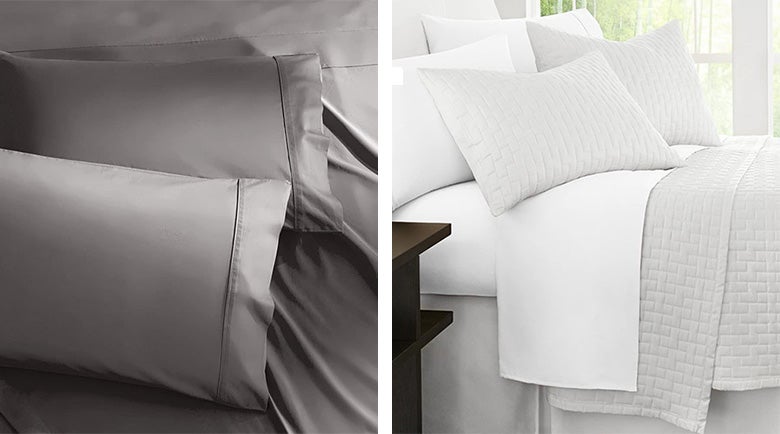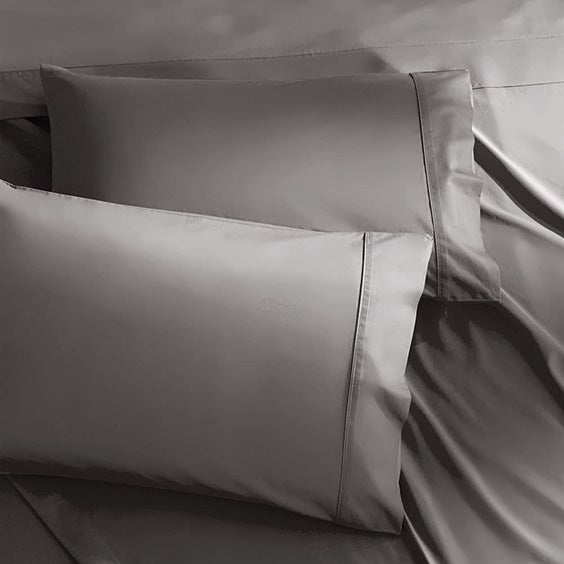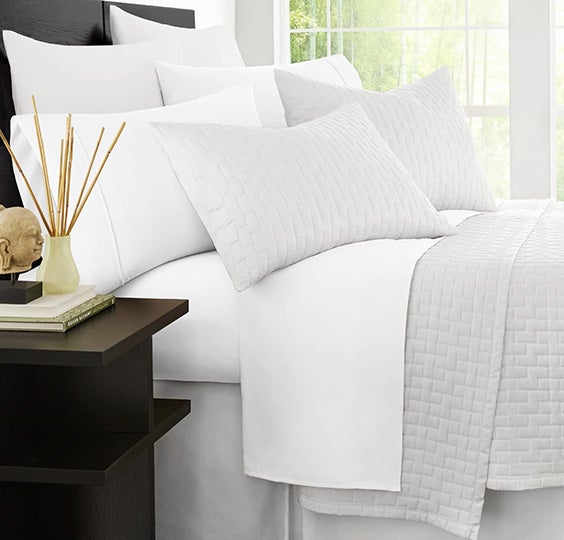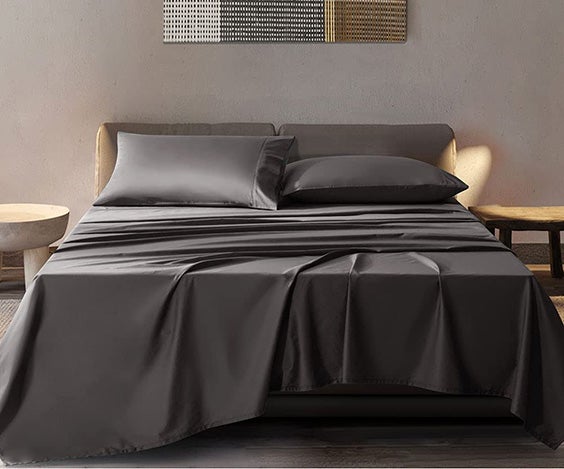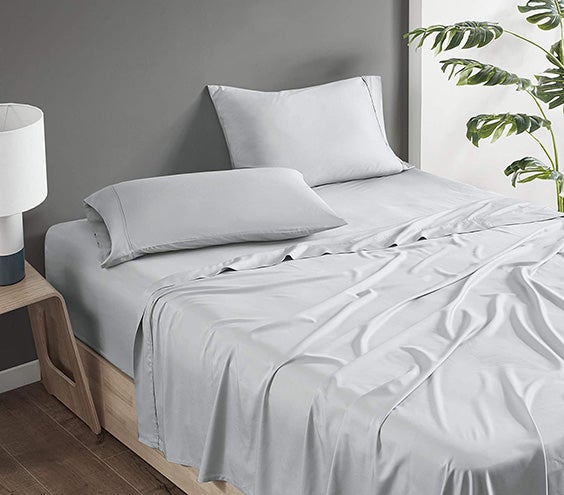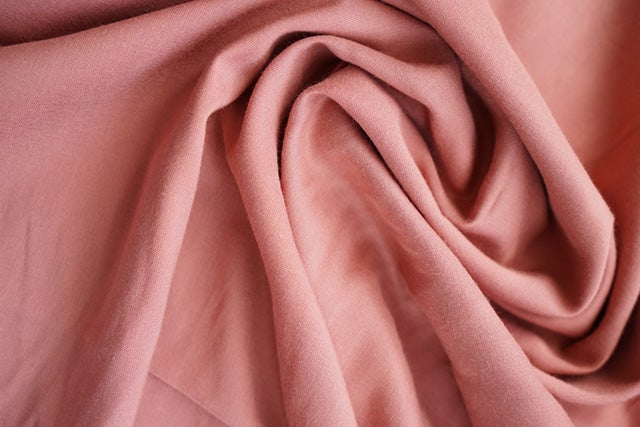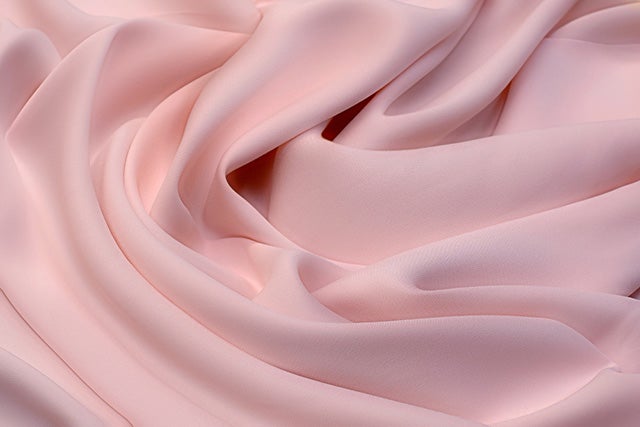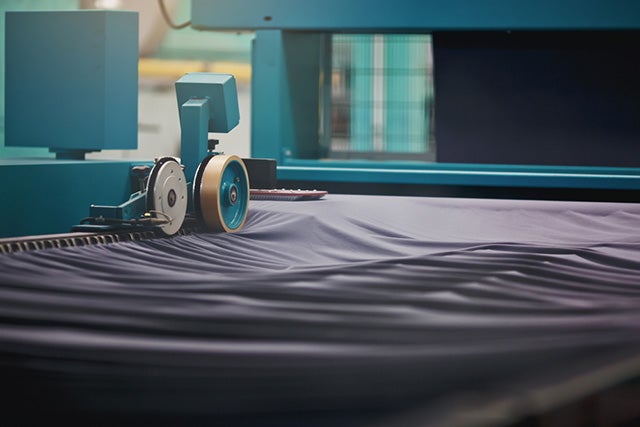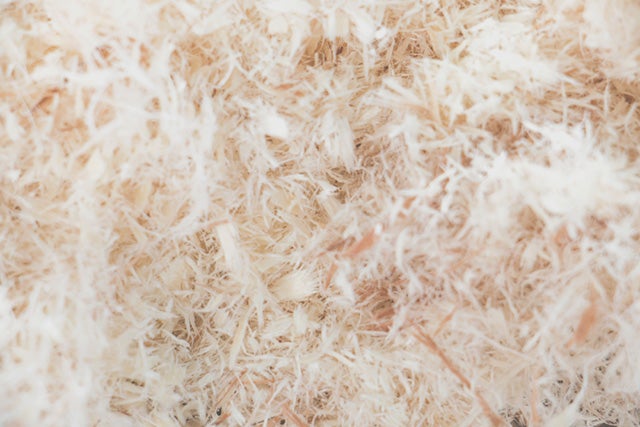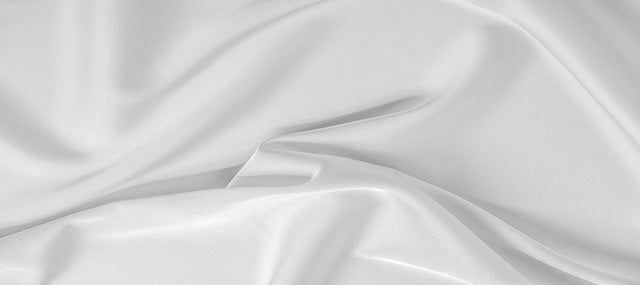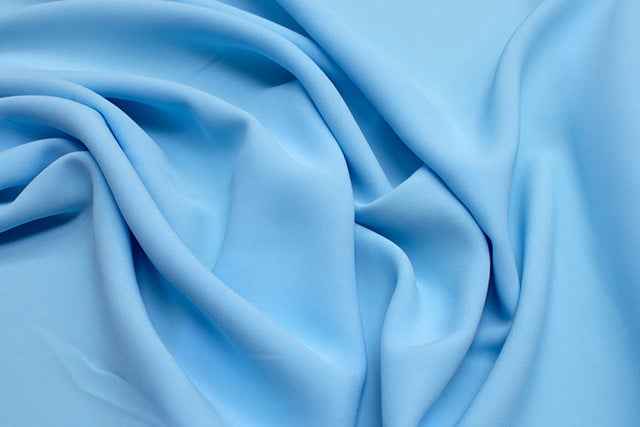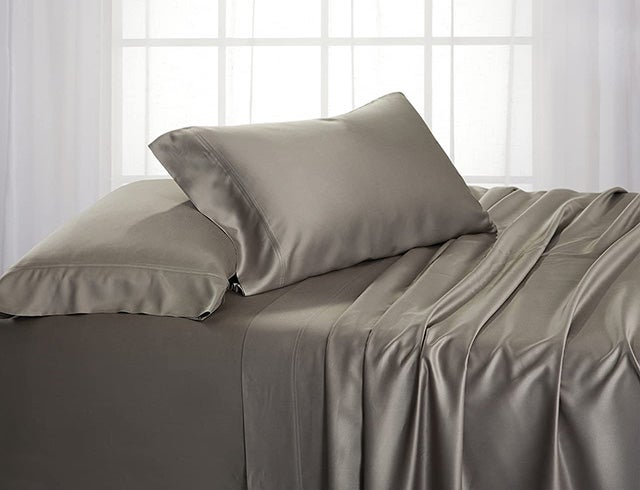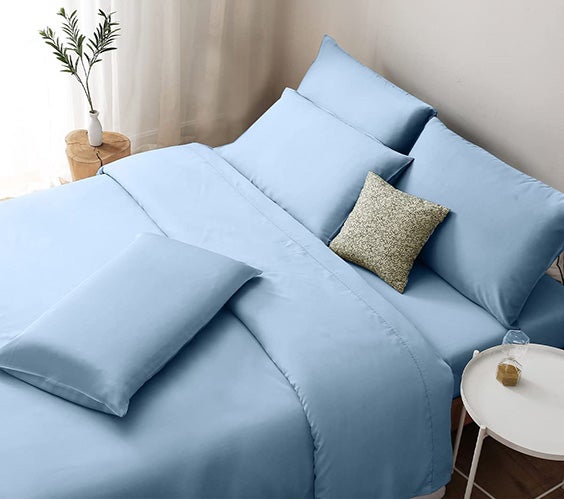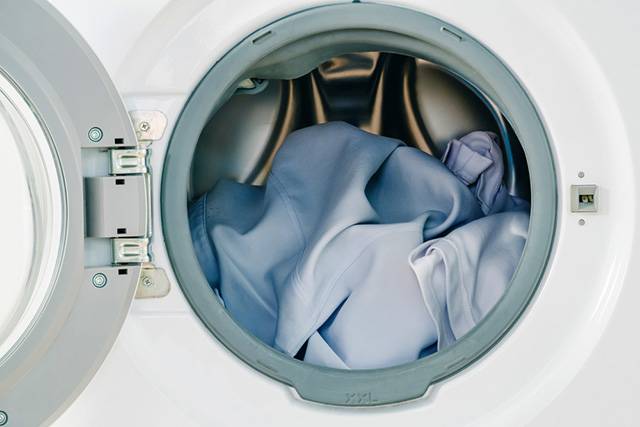Are you looking for the best material for a new set of sheets? Then you have probably considered getting viscose or rayon. However, the two fabrics are hard to differentiate.
Some believe that viscose and rayon are synonymous words, but they are differing in terms of manufacturing and uses.
We’ll help you choose between the two by comparing viscose and rayon’s sources, production, and benefits!
Characteristics of Viscose and Rayon
Here’s a quick comparison between viscose and rayon.
— Viscose
- Material: plant fibers that go through a process called cellulose xanthate
- Use: clothing
- Absorption capacity: low
- Texture: soft
- Durability: high
— Rayon
- Material: wood pulp that goes through cellulose immersion
- Use: furniture and medicine
- Texture: cool
- Absorption capacity: high
- Durability: low
What is Viscose?
Viscose is one of the three kinds of rayon that has a cotton-like texture but a silk-like appearance. This semi-synthetic material drapes well, which is why it’s commonly used for making light clothing. The versatile substance is also used in manufacturing memory foam mattresses and upholsteries.
This fiber is derived from an essential part of cell walls in plant, the cellulose. Unlike rayon, which is made of bamboo cellulose, viscose is made of viscose (wood) cellulose. The same material is used to make cellulose film or cellophane.
Pros and Cons of Viscose
Let’s weigh the pros and cons of viscose.
| Pros | Cons |
|
|
What is Rayon?
Rayon is a fabric that is also made from cellulose, but it comes from trees and not cotton plants. Unlike viscose, rayon is a manufactured fiber that used to be an alternative to silk. Pillowcases, sheets, mattress covers, and other bedding ensembles are the main products of rayon. The rayon fabric is so porous and breathable, so it’s also hypoallergenic.
The cellulose for rayon usually comes from bamboo, one of the fastest-growing grass globally. The manufacturing process of this fabric requires chemical treatment, so rayon is not considered a natural fiber.
Pros and Cons of Rayon
Let’s find out the advantages and disadvantages of using rayon.
| Pros | Cons |
|
|
Differences Between Viscose and Rayon
Viscose and rayon are popular names in the world of fabrics. Let’s compare the two fibers in terms of history, manufacturing, and uses.
— History
Rayon was first manufactured over one hundred years ago due to the disease outbreak in the 1860s that affected silkworms. This put the French silk industry at risk but was immediately solved by Louis Pasteur and French Count Hillaire de Chardonnet.
Their artificial silk material was patented in 1885, but it was later on called fake silk. Only in 1952 was the term rayon coined by the Federal Trade Commission, a general word for any man-made fiber made of cellulose.
Rayon and acetate are the two main categories under rayon. Three years later, a new type of rayon was made, the high-wet-modulus rayon or HWM. This is more durable and widely used by different companies.
Viscose comes from rayon too. But historical records state that it was already being produced as early as 1883 as a cheap alternative to natural silk.
— Manufacturing
A fabric, cloth, or textile is produced through interlocking threads through spinning ray fibers. These fibers can be derived naturally or synthetically.
As one of the three types of rayon, viscose is deemed semi-synthetic to natural. The word itself refers to the viscous liquid turned into fibers. Cellulose is the main material used to create viscose.
Some trees and plants used to create viscose include beech, pine, soy, hemlock, spruce, and eucalyptus.
The cotton linter or pulp of the wood is liquified to immerse and be shredded. After aging, it is mixed with carbon disulfide to create xanthate. It is then melted and treated with other chemicals to create the fiber.
Viscose can be blended with various fabrics like polyester and cotton to boost the benefits. The levels of caustic soda used when making viscose should not be too high. Otherwise, it tends to be low in durability.
The final product is a textile that looks like silk and feels like cotton.
On the other hand, rayon is a synthetic material that comes from cellulose. It is not made through the cellulose xanthate process but cellulose immersion. It is not considered natural because rayon is a modified form of natural polymers.
Producing rayon is more environmentally friendly than viscose because less energy and toxic chemicals are needed.
What distinguishes rayon from viscose is the material used. It can be derived from bamboo or cotton waste.
— Uses
Viscose is a popular bedding fabric because it is lightweight, soft, and natural. Because it is made of natural bamboo, viscose ensembles are usually marketed as antimicrobial. Window drapes, mattress protectors, and cooling toppers are also made of viscose.
It is also utilized in the clothing industry to make jackets, coats, dresses, shirts, and pants. Even disposable wipes and fabrics for cleaning touch-screen phones are made of viscose.
In 2003, Amazon and other department stores were required to pay penalties for incorrectly claiming viscose as eco-friendly. The Federal Trade Commission states that this “anti-microbial” feature from the bamboo is also lost after the chemical processes that the textile has undergone.
Meanwhile, rayon fabric is used in making blankets, bedsheets, and curtains. Some pillowcases and mattress toppers are also made of rayon to imitate natural silk.
The medical sector also utilizes rayon for surgical masks and bandages as it quickly absorbs blood and other liquids.
Some garments are also made of rayon, including jackets, blouses, dresses, and sportswear. Because it quickly absorbs moisture and promotes breathability, many activewear products are made of rayon to keep users cool and dry while working out. Drapey dresses also use rayon to make them look flowy.
— Care
Some viscose and rayon ensembles and clothing require dry-cleaning because the material may shrink if it keeps being machine-washed. Dry-cleaning will save you the stress of care directions, but it’s more expensive.
But if you still want to wash viscose, use cold water and avoid dye bleeds. A mild detergent is important when cleaning viscose fabric. Never squeeze it out or wring to avoid stretching. Simply rinse, shake the water out, and leave it hanging to air dry.
One problem with viscose is that the stains are hard to remove. Trying to spot-treat will only lead to more permanent marks, stretching, and weakening.
The same method is recommended for rayon when machine-washing, although dry-cleaning and hand-washing are more preferable. Hand-washing was only suggested when the modal and lyocell were created.
If you want to machine-wash it, set the cycle to gentle. Do not rinse it with the machine.
Rayon can be bleached, although some rayon fabrics are more sensitive to chlorine bleach than others.
Ironing rayon is not a good idea, but if you still wish to do so, use medium heat. Turn the inner surface outwards then start running the iron over it.
Which One to Choose
No fabric is better than the other especially when the differences between rayon and viscose are minimal. While viscose is more durable, it is prone to mildew and quality reduction if the material is exposed to sunlight. On the other hand, rayon may feel cooler and moisture-absorbing but it is less durable than viscose.
The same kinds of textiles have the same issues with wrinkling, heat, and shrinking.
In the end, it all comes down to preference. When sleeping or wearing certain clothing pieces, consider whether you want a silk-like material or a cottony feel. If you want the former, choose rayon. But if you want the latter, opt for viscose.
Final Thoughts About Viscose and Rayon
Because no fabric is better than the other, you may try using viscose and rayon alternately for your bedding and clothing. Buy both materials and enjoy them!
We hope this article has helped you compare the characteristics and uses of viscose and rayon. If you’re still not sure about which one to get for your bedding, leave your questions in the comment section. And be sure to check out our guide to the best sheets and bedding!
Photo credit: Margareta Felicia/Shutterstock; Dmitri Kalvan/Shutterstock;
Zenzeta/Shutterstock; BK666/Shutterstock;
ANAID studio/Shutterstock
